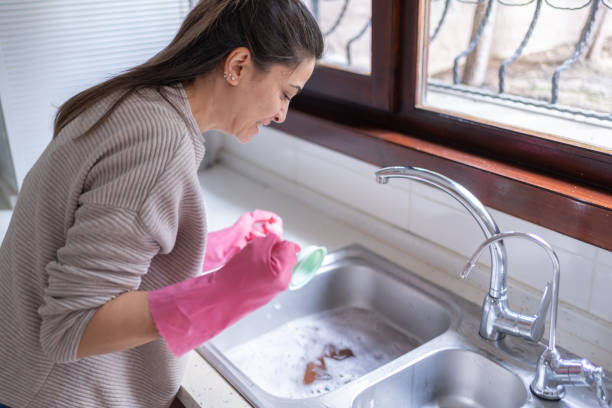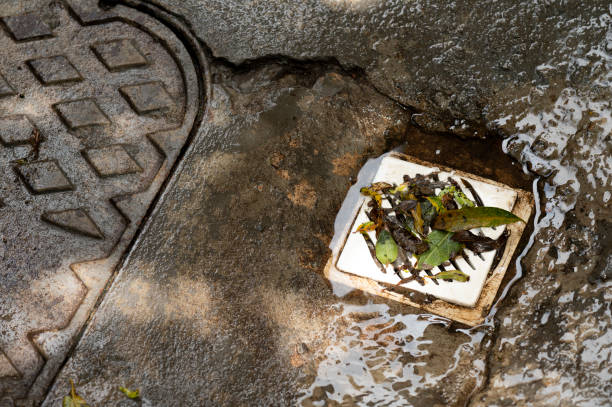When we think about plumbing, a majority of drain cleaning work is “out of sight and out of mind”, right? But plumbing can quickly lead to undesirable problems, or worse! Preventive maintenance is very helpful, and professional drain cleaning can help prevent those dreaded sewer line clogs from coming back! Here is some information from All Pro Jetting & Plumbing for homeowners to know about major drain cleaning and what you can expect from a drain cleaning process.
What Is Drain Cleaning? Why Is It Important?
Drain cleaning, or cleaning drains, is the act of restoring flow in your plumbing systems by removing buildup, obstructions, or debris preventing wastewater from flowing back into your house. There could be blockages caused by grease, hair, food waste, soap, and even tree roots. When these materials cause a buildup inside your pipes, they obstruct the flow of water and create pressure from the blockage that could damage your pipes or cause flooding.

Learn the importance of drain cleaning:
- Why Is It Important To Clean Your Drains?
Routine drain cleaning is necessary to prevent clogs, preserve your plumbing system, and protect the health of your living space. By putting off regular maintenance, it is easy to develop an expensive problem with hazardous potential over time.
Here is why it is so important to keep your drains clean:
- Prevents clogs: Removes debris like hair and grease before they cause blockages.
- Extends pipe lifespan: Reduces pressure and corrosion on pipes, avoiding leaks.
- Eliminates foul odors: Clears out decomposing gunk that causes bad smells.
- Maintains hygiene: Prevents the growth of mold, mildew, and bacteria.
- Saves money: Proactive cleaning is cheaper than emergency repairs.
What Are The Signs That Your Drain Needs Cleaning?
Many warning signs suggest you may need professional drain cleaning. The most common sign is a sink, tub, or shower that drains slowly. This is most likely caused by a slow build-up of hair, grease, and food particles inside the pipe.

Some other common warning signs include:
| Slow drains in other sinks or tubs | Standing water | Bad odors | Gurgling or bubbling noises | Water is backing up into other fixtures. | Recurring clogs |
What Are The Methods Of Drain Cleaning?
Drain cleaning methods help to eliminate clogs and buildup in drains, restore drainage in pipes, and ensure reasonable water movement through plumbing systems. There are plenty of methods for cleaning a drain; some are very easy, quick solutions at home for minor problems, while other methods require a lot more mechanical or professional labor for cleaning severely clogged drains, to help maintain the plumbing system’s health.
Use these methods to clean your drains properly:
- Method 1 — Baking Soda and Vinegar
This process is a DIY drain cleaning using a chemical reaction of fizzing, as an awesome way to cause a clog with mild organic material to break down. Pouring baking soda and then vinegar down the drain. Give time to sit, and rinse with hot water to flush the drain.
- Method 2 — Plunger
A sink plunger makes a seal against the mouth of the drain and provides suction. You pump the plunger up and down, which produces pressure that can dislodge smaller clogs from the drain opening, such as soap scum or hair.
- Method 3 —Drain Snake (Auger)
A drain snake or auger consists of a long flexible cable with an auger at one end. A drain snake is rotated manually or uses a mechanical feeder to insert its cable end into the pipe. Turning the cable can disengage deep clogs from plumbing or physically pull the clogs out of the pipe.
- Method 4 — Hydro-Jetting
Hydro-Jetting is a method of drain cleaning used by professionals that sprays a high-pressure stream of water to thoroughly scour a drain system. It is very effective at removing serious or stubborn clogs, or heavy grease buildup, and roots from a tree that has managed to invade a sewer line.
- Method 5 — Cleaning the P-Trap
Blockages occurring directly under the sink can be cleaned manually using the P-trap method. Simply place down a bucket, unscrew the curved pipe, and remove any debris caught inside, like hair, food, or other debris.
Conclusion
Having regular drain cleaning done at home is important to maintain the plumbing in your home and prevent unwelcome surprises. Taking a proactive approach—which includes easy-to-manage methods for small clogs, and bringing in professionals for serious blockages—saves your wallet, saves unpleasant odors, and saves you from potential health risks. By doing a simple, regular maintenance job to clean your drains, you not only help the longevity of your pipes and keep water flowing, but you also create a comfortable and safe place to live. There is no sense in taking drain maintenance lightly! Cleaning your drains is a simple practice that allows you to avoid issues in the future!
FAQs
How often should I clean my drains?
Most experts recommend cleaning drains at least once a year.
Can I clean my drains myself?
Yes, minor clogs can usually be handled with DIY methods like baking soda and vinegar or plungers.
Is chemical drain cleaner safe?
Use with caution — frequent use can damage pipes and harm the environment.
What causes most drain clogs?
Grease, hair, soap scum, food waste, and tree roots are the most common culprits of household drain blockages.
When should I call a professional plumber?
If you notice recurring clogs, slow drains throughout the home, or water backing up into sinks and tubs, it’s time to call a professional.
Is hydro-jetting safe for pipes?
Yes, when done by professionals, hydro-jetting is safe and highly effective for clearing stubborn clogs and heavy buildup.
